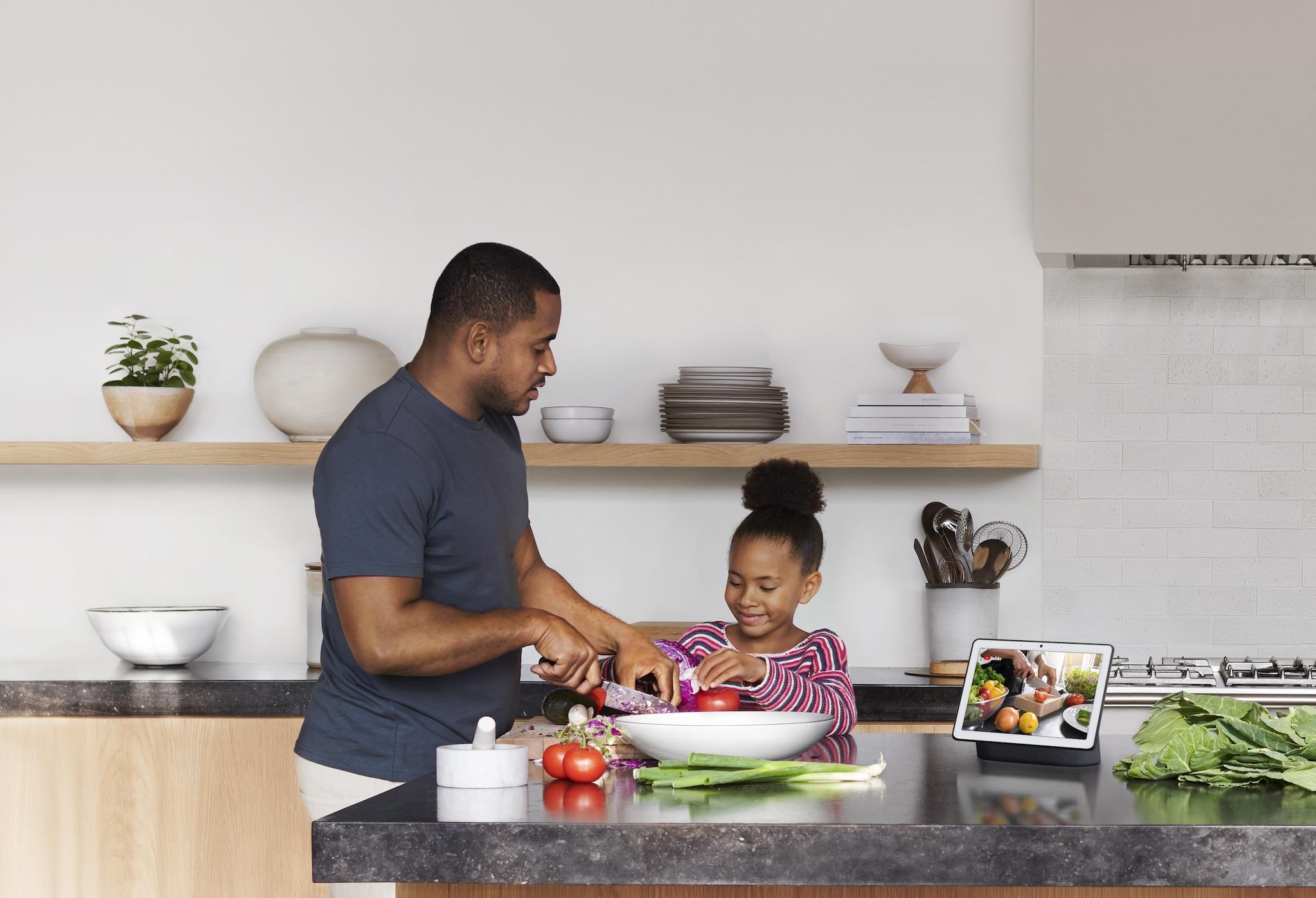Google Nest Hub Max review: Smart display is beautiful and clever – but missing one key feature
It seems a shame to have such a fine screen and nothing much to watch on it

Google's new smart display, the Nest Hub Max, is probably the most beautiful and clever home assistant there is. But it is lacking one key feature.
The screen is the latest home for the Google Assistant, the rival of Amazon's Alexa. It puts those smarts into a fulsome display that can not only answer questions with its voice, but which can also show things on its vast display.
And that display is not only big, as the name Max might suggest. It's also pristinely beautiful: showing photographs, information and videos in full and fine colour, in a way that allows them to pop out of your kitchen counter but will allow it to blend in when it is not required.
What's more, Google has added whole new features alongside the increase in screen size. Most impressive is the Face Match feature, which can identify who is looking at the screen and show information that is personalised to them.
That feature makes use of another addition to the new and bigger home hub: the camera, which sits in the top of the display. That can be also be used to make phone calls or let you monitor the room from afar – and Google, ever conscious about people's concerns about being spied on, offers the option to switch it off entirely with a hardware switch.
The Nest Home Hub Max is, simply, the best looking and most useful version of the smart display for your kitchen counter that has been released. Its lush display is matched by the homely and soft design of the product itself, and booming sound of its speakers is the perfect complement for the unmatched smarts of the Google Assistant.
The pity is that the ways to use the bigger and more beautiful screen are so limited. Having such a beautiful way to look at things makes it only more tragic that there's so little to see.
Google has created new ways of showing its huge library of information on the screen, using it to display your photos as well as reminders, information, or YouTube videos. But it has been unable to get shows from Netflix, or to integrate with existing TV subscriptions, meaning that you won't be able to catch up on programmes while you cook.
Having a screen so huge sitting in the corner of your kitchen can be a constant reminder of what it could be. And the Home Hub Max could be something so great, finally offering a smart display in your room that justifies the space it takes up, but it is just not there yet.
What the Nest Hub Max can do, it does brilliantly. Asking for information is incredibly smooth, with the voice assistant both better at recognising your speech than Alexa and better at presenting a useful answer to your question. The software makes good use of the screen, displaying information such as maps in response to questions about your commute.
It even makes good use of the video services that it has. The integration with YouTube is seamless, with the screen able to pick out the best videos for watching in the kitchen and recommend them to you, and you can also use the display to check in on other cameras around the house.
Google has even created new ways to browse around YouTube, specifically created for helping out in the kitchen. If you ask for help with a skill like dicing an onion, it will stop whatever it's doing and find the relevant video from the streaming service, instantly giving you help on the screen.
But there is no Netflix, and (perhaps less surprisingly) no Amazon Prime Video. Your Nest Hub Max won't be able to integrate with other TV services like Sky Q. You are simply left imagining how fine those shows would look coming out of the beautiful display and hefty speakers built in the back.
Amazon's Echo Show is the obvious competitor to the new Hub Max, offering a very similar service in a very similar design. And Google's alternative beats the competition in almost every way: it makes much more clever use of the display, using Google's knowledge of the web to show a variety of different information. It has its own limits, in that it doesn't have access to YouTube; but it does have access to Amazon Prime Video, which is likely to be a more entertaining companion for a long session in the kitchen.
All of this might be a secondary complaint if Google didn't already make a smaller version of the display: the Home Hub, without the Max. That's much smaller – the screen is the size of a phone, rather than a tablet – but it also means that its display is slightly less wasted, and used more efficiently.
It's a little small to watch anything on, but there isn't all that much to watch anyway. The smaller hub is missing the big, beautiful screen, of course, but with so little to watch on it you will probably not be missing out.
Join our commenting forum
Join thought-provoking conversations, follow other Independent readers and see their replies
Comments
Bookmark popover
Removed from bookmarks